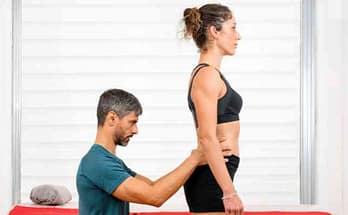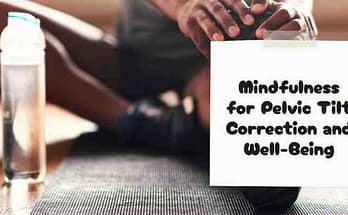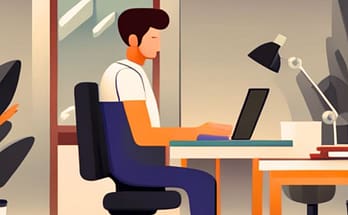Sitting is bad for your body. We all know this, but we don’t necessarily know the details. That’s why I’m here: to tell you about the dangers of sitting and how you can undo them. In this article, we’ll cover everything from hip pain from prolonged sitting to back pain from improper posture when seated at a desk or computer.
Hip, low back, and neck pain
Sitting for long periods can cause pain in the hips, lower back and neck. In fact, the more you sit, the more likely you are to experience pain. The shape of your hips and lower back can affect how much pain you experience. If they’re rounded forward or have an excessive curve (hyperlordosis), they’ll put a lot of pressure on joints in your pelvis, making it painful to sit for long periods.
In addition, tight muscles around your sacrum (the triangular bone at the base of your spine) could cause muscle spasms when you sit down or stand up from sitting for extended periods.
Luckily there are steps you can take to help prevent sitting-related hip pain:
Weaken your muscles
Sitting for long periods can cause muscles to weaken. To stay strong, you need to use your muscles regularly. This is especially important for maintaining good posture and preventing injuries. Some muscles that are vital for good health include:
- Hip flexors and extensors, which move your hips and legs
- Hamstrings, which move your knees back
- Chest (pectoralis minor), which helps keep shoulders back
- Triceps (back of arm), which extends elbow joints
Bad for your blood sugar levels
Sitting for long periods can raise your blood sugar levels, leading to weight gain and insulin resistance. Sitting causes muscles used when you stand or walk to relax. This makes it more difficult for them to take up glucose from the bloodstream after a meal (a process called “insulin sensitivity”), leaving you feeling hungry sooner than usual.
The body also releases an enzyme called lipoprotein lipase when a person sits down — this enzyme helps release fat into the bloodstream so that it can be burned off again to keep energy levels high while resting. But too much sitting means insufficient time between meals for excess fat deposits on your body to be burned up before they turn into new adipose tissue; eventually, this leads to weight gain.
Make you age faster.
- Sitting for too long can lead to muscle stiffness and pain.
- Sitting for too long can cause a loss of muscle mass.
- Sitting for too long can cause a loss of bone density.
Pressure on your spine
- The spine is a column of bones that supports the body.
- The spine comprises vertebrae, which are separated by discs and ligaments.
- Sitting puts pressure on your spine that it cannot support correctly over time because the position places extra weight on the joints and muscles in your lower back, neck, shoulders and hips.
If you sit at a desk or computer all day…
If you sit at a desk or computer all day, position your chair, so your feet are flat on the floor and your knees are level with your hips. This will help keep your spine in alignment and prevent back pain. If you need to use a footrest, such as a footstool or a box under the seat of the chair, make sure that it allows for good posture and doesn’t cause more problems by forcing you to sit unnaturally upright.
Even if you don’t habitually sit still for long periods of time every day, there are some simple ways to improve how often you move around. The worst thing about sitting is that it can lead to poor posture over time by causing muscles in the back and shoulders to weaken due to lack of movement or exercise (even just getting up once an hour will help). A good rule of thumb is that if something hurts while working on it at home, it’s probably not ergonomically designed—look into getting something else instead!
Get up and walk around
If you have to sit for long periods, try the following:
- Sit up straight, and don’t slouch. Put your laptop on a stand, so the screen is in front of you at eye level. This will help you avoid neck strain and maintain good posture.
- Stand up every 30 minutes, even for a minute or two (just enough time to take a short walk around the office). Even standing gives your body a break from sitting, which helps with circulation and keeps blood moving through your legs more efficiently (that means less risk of varicose veins and blood clots). If there’s no space available in the office where you can get up without disrupting other people working around you, try using an exercise ball instead—it will keep your core engaged and improve balance skills!
If it doesn’t disrupt productivity, consider using an adjustable-height desk that allows employees to stand at their desks instead of sitting all day long. They’ll get extra motion throughout their day without leaving their chair entirely!
You may also want to consider installing treadmills underneath these types of desks so employees can walk while doing work tasks; this makes sure everyone stays active while also getting stuff done!
Sit straight with good posture
To minimize the strain on your neck, shoulders and back:
- Sit up straight with good posture. This means keeping your back and neck straight, not slouched or leaning to one side. Keep your shoulders relaxed; don’t let them hunch up around your ears. Your head should be level and aligned with the rest of your body.
- Don’t cross your legs or arms when sitting for long periods (e.g., on an airplane). Crossing one leg over another can put pressure on the muscles in the front of your thigh, which can cause pain or uncomfortable feelings in that area later on. If you cross one leg over another while sitting down, make sure there is plenty of room between that leg’s knee and wherever it touches something else (table/lap/etc.).
Be aware of how you are carrying yourself
While sitting is a necessary part of life, it can also be detrimental to your health if you are not careful. Sit up straight, don’t slouch or slump, keep your shoulders and chest out, keep your head up and eyes forward, and keep both feet flat on the floor or a footrest if possible.
Set a timer
A timer is a great way to help you remember to get up from your chair. You can set the time on your phone or use one of the many free timer apps (such as Google’s Timer) available for download in the app store.
Remember that your body may need time to adjust to this new routine. It’s not always easy to make changes in our lives, especially when they have been ingrained in us since childhood! So be patient with yourself and don’t give up if you occasionally forget—try again next time.
Be aware of how much time you spend sitting down
It’s important to be more aware of how much time you spend sitting down each day, especially if you work where you sit most of the time. While it might seem like there’s nothing wrong with sitting down for long periods at work and in your free time, this can negatively affect your body.
One way to combat the dangers of sitting is by taking breaks throughout the day that force you out of your chair and onto your feet. This will help prevent blood clots from forming in your legs and reduce back pain caused by sitting too long without movement. Additionally, getting up often will allow for better circulation and prevent aches and pains from developing due to poor posture while seated over an extended time. Finally, if possible, try standing with good posture whenever possible so that when it becomes inevitable (such as waiting at the bank), it doesn’t affect how other people perceive us negatively!
When trying not to be too sedentary, engaging in regular physical activity is also important. For example, walking around during lunch or exercising after work before heading home are great ways to keep our muscles strong, even though we don’t move as much on our days off from work!
The bottom line? Sitting too much is bad for your body and your health. So if you spend most of your day sitting down at work or home, make sure you get up once in a while to stretch out those muscles and give yourself a break from being sedentary.




